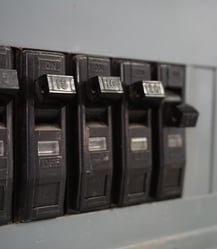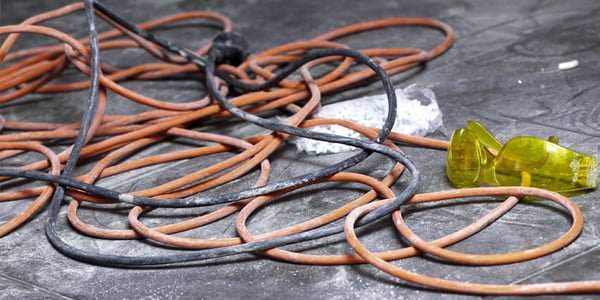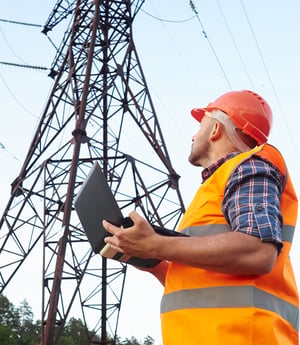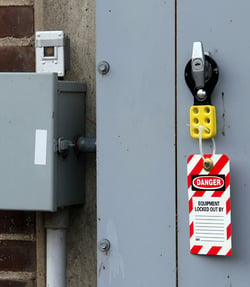
By
Rob Boyle
October 10, 2024
Updated
October 10, 2024

What are electrical hazards and how can I prevent them?
Electrical hazards can cause burns, shocks, and electrocutions. Please be cautious when working with/near electricity, such as power lines and electrical equipment, and be aware of your environment.
Why is electrical safety important?
Electrical hazards can be fatal. It is important to follow the same systematic approach used for other health and safety issues when dealing with electrical safety.
It is imperative to know how to work safely with or within the vicinity of electricity because electrical current in regular businesses and homes have enough power that, if exposed to, can be fatal.
Electrical hazard safety means taking precautions to identify and control electrical hazards
What are the most frequent causes of electrical injuries?
The following hazards account for the most common electrical injuries:
- Contact with power lines
- Lack of ground fault protection
- Path to ground missing or discontinuous
- Equipment not used in the manner prescribed
- Improper use of extension/flexible cords
What are some ways to prevent electrical hazards?
It is important to always use caution when working near electricity. The following tips can help improve your working conditions and reduce the likelihood of an electrical accident.
Never use faulty equipment
Make it a habit to inspect tools, power cords, and electrical fittings for damage or wear and tear prior to use.
Any damaged or faulty equipment should be labeled and immediately replaced. Any equipment that requires repairs should be disconnected from power supply and removed from service until repairs have been done.
Repairs and alterations should only be attempted by a qualified person, following proper energy isolation procedures.
Check insulated tools for damage before each use. Once the insulation layer of an insulated hand tool becomes nicked, cracked or cut, the tool is no longer effectively insulated – it actually becomes more of an electrical conductor and can increase your risk of injury.
If a tool has damaged insulation, it is no longer safe to use – replace it right away.
Never operate electrical equipment while you are standing in water
If electrical equipment is wet, have a qualified electrician inspect it before energizing it. Never repair electrical cords or equipment unless you are qualified and authorized.
If working in damp locations, inspect electric cords and equipment to ensure that they are in good condition and free of defects, and use a ground-fault circuit interrupter. Never use equipment outdoors that is labeled for use only in dry, indoor locations.
Pay attention and be aware
Do not use non-grounded, two-prong adapter plugs to three-prong cords and tools. Always be aware of where the breakers and fuse boxes are located
Always turn off power
Switch off equipment and power sockets before removing the plug from the power source to adjust or clean equipment. Any equipment that can be switched off when not in use, should be switched off.
Wear required PPE
When working with or close to electricity, be sure to wear the required PPE and use wooden ladders or ones made from non-conductive material.
How can I be safe working with electrical cords?
- Check your cords often for fraying or damage and replace them if necessary.
- Use the right extension cord for the job: heavy duty extension cords with power tools, moisture-resistant extension cords outdoors.
- Place all cords safely out of the way so people don’t trip over them. When necessary, you should always tape the cord to the wall or the floor, and never use nails or staples, as these can damage cords, causing fire and shock related hazards.

- Use correctly rated cords and equipment, correct size fuses.Cords that are used must be rated for the amperage or wattage that you are using.
If you notice that the outlet is unusually hot, this is a sign that the wiring conditions are unsafe. Unplug any devices connected to these outlets and refrain from using them until they have been checked by a qualified person.
What should I do if I am working close to power lines?
 First, look for overhead power lines and buried power line indicators, such as warning signs.
First, look for overhead power lines and buried power line indicators, such as warning signs.
When working near overhead or buried power lines, always assume that all wires are energized at lethal voltages.
Never assume a wire is safe to touch even if it is down or appears insulated.
- Use non-conductive wood or fiberglass ladders.
- De-energize and ground lines when working near them, or utilize other protective measures such as guarding or insulating the lines.
- If you come across a downed/fallen or damaged power line, call an electric utility company to report it.
- Never touch a fallen power line. Downed power lines can carry an electric current strong enough to cause serious injury or even death. Electricity wants to move from a high voltage zone to a low voltage zone – and it could do that through your body.
- The proper way to move away from the downed power line is to shuffle away with small steps, keeping your feet together and on the ground at all times. This will minimize the potential for a strong electric shock.
- Stay at least 10 feet away from overhead wires during cleanup and other activities. If working at heights or handling long objects, survey the area before starting work for the presence of overhead wires. Use wooden or fiberglass ladders outdoors. Metal ladders conduct electricity.
- If an overhead wire falls across your vehicle while you are driving, stay inside the vehicle and continue to drive away from the line. If the engine stalls, do not leave your vehicle. Warn people not to touch the vehicle or the wire. Call or ask someone to call the local electric utility company and emergency services.
What is Lock-out/Tag-out?
Lock-out is the isolation of energy from the system (machine or equipment), which physically locks the system in a safe mode when a machine is under servicing or maintenance. This prevents unexpected start-up or release of stored energy.
Tag-out is a labelling process that is always used when lock-out is required. The process involves attaching or using an indicator that includes items such as:
- Why the lock-out was required
- Time of application of tag-out
- Name of authorized person who attached the tag and lock on system
 NOTE: Only the person who placed the lock and tag is permitted to remove them. Lock-out/tag-out can only be applied by a Qualified Person, who is permitted to work on or near exposed energized parts and has been trained in the following techniques:
NOTE: Only the person who placed the lock and tag is permitted to remove them. Lock-out/tag-out can only be applied by a Qualified Person, who is permitted to work on or near exposed energized parts and has been trained in the following techniques:
Ability to distinguish exposed live parts from other parts of electrical equipment
Ability to determine the nominal voltage of exposed live parts and the clearance distances required
